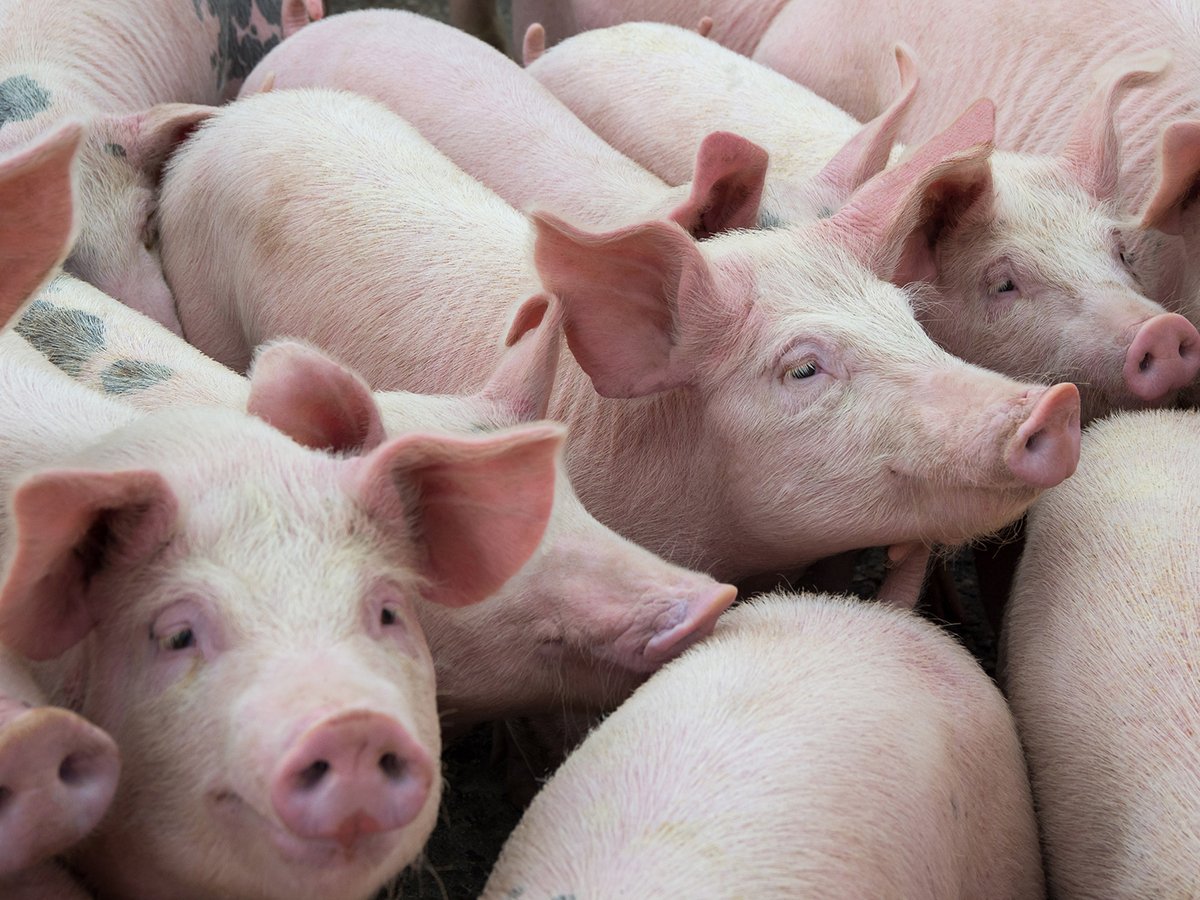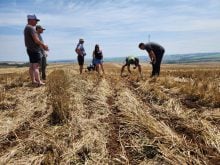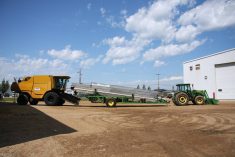Grasshoppers are causing concern for farmers this fall but not in the usual way.
Although the insects are damaging late crops still in the field, their presence in harvested crops is the big problem.
Grant McLean of Saskatchewan’s Agriculture Knowledge Centre said reports are coming in from farmers, particularly pea growers, who say they are finding a lot of the insects in their combine hoppers.
The higher populations seem to be found south and east of Swift Current near Ponteix and Assiniboia, and in pockets from Abernethy to Ituna, near Preeceville and by Meadow Lake.
Read Also

Quebec pork company calls for transparency around gene-edited pigs
Quebec-based pork company duBreton is calling for transparency around meats from gene-edited pigs on concerns that a lack of mandatory labelling will confuse consumers, and dilute certification claims. The organic sector is also calling for labelling rules.
Infestations were not predicted to be high this year but the “backward cool spring” delayed the pests’ maturity along with that of the crops, McLean said. Peas are among the first crops to come off and farmers are noticing more grasshoppers than they
expected.
“If you have high populations, they can even cause heating or staining during the harvest process,” McLean said.
Canadian Grain Commission entomologist Blaine Timlick said there would have to be an awful lot of grasshoppers to cause heating problems in the bin.
“You would have to have more grasshoppers than grain to have that kind of effect.”
He said farmers should aerate their bins if they suspect heating will occur for any reason.
He noted that grasshoppers feed on crops until the soft dough stage. After that, if they’re in fields they are eating something else.
Grasshoppers’ chances aren’t good when they are taken into combines.
“Frankly, they’re going to die,” Timlick said.
The bodies will dry up, so the moisture from inside the insects will not affect the moisture content of a grain sample.
However, staining can be an issue in peas.
Stains from insects will look like dirt on the peas and cause the sample to be downgraded.
“Samples containing staining of this nature will be considered to be earth tagged and graded according to colour definitions,” says the official grain grading guide.
“Samples having a distinct objectionable odour not associated with the quality of the grain will be graded Type of Grain Sample Account Odour.”
Possible downgrade
Timlick said producers should also be concerned about grasshoppers because they are considered foreign material.
The tolerance levels depend on the crop variety. For example, insect parts in Canada No. 1 green peas cannot exceed 0.02 percent.
The tolerance level for grasshoppers in No. 1 Canada Western Red Spring wheat is one percent, but in a No. 4 sample there can be eight percent and in feed there is no limit.
McLean said from what has been reported to the knowledge centre , it sounds as though some producers are dealing with excessive amounts.
“Farmers are having to pre-clean the grain (before storing) to keep the grasshopper body parts out.”
He said grasshoppers can still damage standing flax and oat crops, even though they aren’t eating them. For example, they clip off the flax bolls and reduce yields because the bolls fall to the ground and can’t be harvested.
In Alberta, crop specialist Harry Brook said he had not yet heard of concerns, although he conceded harvest is three to four weeks behind.

















